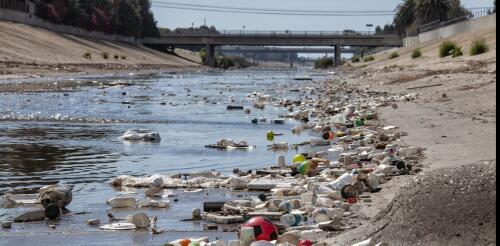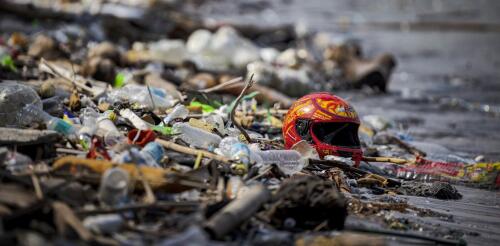Recycling
Europe is in the midst of a heat wave, and while Olympic athletes in Paris for the 2024 Summer Games might be spared the worst of it, the weather will still be hot. As global temperatures have risen, major sporting events like the Olympics and FIFA World Cup have had to adapt to high heat and extreme storms to keep athletes and fans safe and allow the games to go on. Olympic organizers have moved events such as marathons to early mornings and even to cooler cities. FIFA, the governing body for world soccer, pushed the 2022 Men’s World Cup back from its usual time in June to late November so it could be held in Qatar. Many of the Olympic events, such as beach volleyball, will be played outside in the heat. AP Photo/Thomas Padilla The heat risks and the environmental impact of major sporting events have led some people to question whether these events should be held at all. But as someone who st...
Plastic waste is piling up at a daunting pace around the world. The World Bank estimates that every person on the planet generates an average of 1.6 pounds (0.74 kilograms) of plastic waste daily. To curb this flow, 175 nations are negotiating a binding international treaty on plastic pollution, with a completion target of late 2024. In July 2024, the Biden administration released the first U.S. plan for addressing this problem. The new U.S. strategy covers five areas: plastic production, product design, waste generation, waste management and plastic capture and removal. It also lists actions that federal agencies and departments are currently pursuing. I study environmental law, including efforts to reduce plastic pollution. As the world’s largest economy, the U.S. is a critical player in this effort. Based on my research, here are three proposals in the U.S. plan that I believe are important and one omission that I view as a major gap. As of...
Every year, Americans buy somewhere between 35 million and 50 million Christmas trees, and many more pull an artificial tree out of storage for the season. In all, about three-quarters of U.S. households typically have some kind of Christmas tree, surveys show. People often ask which is more sustainable – a real tree or an artificial one? It’s a big debate, and the answer depends on who you ask and which factors you consider. A more useful question is: How do I find the most sustainable tree of the kind I want to get? I’m a forestry professor who works on issues of sustainability. There are advantages and disadvantages to both cut trees and artificial trees. Here are some tips to consider for each. Cut Christmas trees require water and maintenance – and careful thought about disposal. 10'000 Hours/DigitalVision via Getty Images If you’re buying a live Christmas tree W...
Plastic pollution has spread to Earth’s farthest reaches, with widespread effects on wildlife, the environment and human health. To curb this problem, U.N. member countries are negotiating a global treaty to reduce plastic pollution, which they aim to complete by the end of 2024. That effort is well underway. In September 2023, the U.N. Environment Programme released the so-called zero draft – a first iteration of ideas and goals that emerged from the first two rounds of negotiations. And in November 2023, the Intergovernmental Negotiating Committee on Plastic Pollution met in Nairobi, Kenya, for the third negotiating round of a planned five sessions. Studies show that plastic causes harm in all stages of its life cycle, from production through use and disposal. Because the draft treaty includes provisions that address all of these phases, environmental advocates greeted it as a step in the right direction. The draft includes 13 provisions that address issues suc...
Lego, the world’s largest toy manufacturer, has built a reputation not only for the durability of its bricks, designed to last for decades, but also for its substantial investment in sustainability. The company has pledged US$1.4 billion to reduce carbon emissions by 2025, despite netting annual profits of just over $2 billion in 2022. This commitment isn’t just for show. Lego sees its core customers as children and their parents, and sustainability is fundamentally about ensuring that future generations inherit a planet as hospitable as the one we enjoy today. So it was surprising when the Financial Times reported on Sept. 25, 2023, that Lego had pulled out of its widely publicized “Bottles to Bricks” initiative. This ambitious project aimed to replace traditional Lego plastic with a new material made from recycled plastic bottles. However, when Lego assessed the project’s environmental impact throughout its supply chain, it found that producing...




